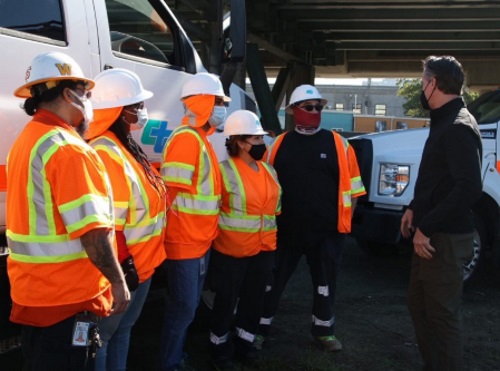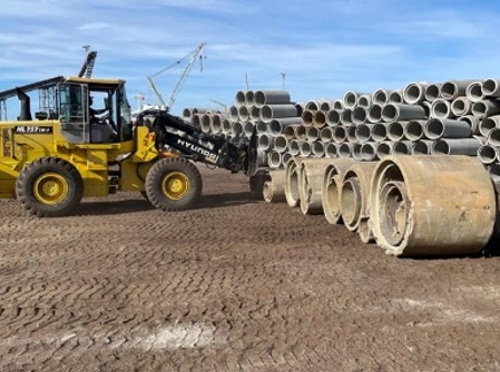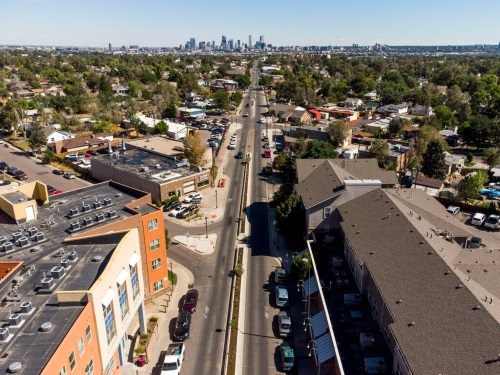FEDERAL ACTION
State, Local Officials Play Vital Role in Infrastructure – Transport Topics
Bipartisan bill would enable states’ ability to clean abandoned mine discharge – Missoula Current
New headlight technology that improves safety, cuts down glare OK’d by NHTSA: How it works – Detroit Free Press
Fact Sheet: Biden-Harris Administration Advances Cleaner Industrial Sector to Reduce Emissions and Reinvigorate American Manufacturing – The White House (Media release)
COVID-19
Texas sues Biden administration over transportation mask mandate – The Hill
NEPA
NEPA reviews moving faster under Biden – E&E News
INFRASTRUCTURE RESILIENCE AND SUSTAINABILITY
Utah lawmakers want electric vehicle drivers to pay their fair share – KSTU-TV
Permanent exemption for environmental review sought for California transit projects – SFBay.ca
Alabama officials to feds: Amtrak restoration along Gulf Coast will harm Port of Mobile – AL.com
Elon Musk’s Boring Company Plots Texas Tunnels – Businessweek
AIR QUALITY
Fighting pollution at the Port of San Diego – KPBS Radio (Link to broadcast)
Massachusetts bond bill will target transportation emissions – State House News Service
Climate activists question whether RI highway projects fit emission reduction targets – Providence Journal
Atlanta Airport Tackles Emissions by Increasing Energy Efficiency in Buildings, Operations – Environment+Energy Leader
ENVIRONMENTAL JUSTICE
Taking Aim at Environmental Racism, Without Mentioning Race – New York Times
How Montgomery County, Maryland can increase equitable access to transit by improving walkability – Brookings (Blog)
NATURAL RESOURCES
Our roads are killing wildlife. The new infrastructure law aims to help – NPR
From dirty diapers to fake money, Nevada DOT’s road crews have seen it all – Reno Gazette Journal
Ridgefield hires attorneys to represent town in environmental lawsuit filed by Save the Sound – News-Times
The Futility of Picking Up the Trash – CityLab
HEALTH AND HUMAN ENVIRONMENT/ACTIVE TRANSPORTATION
Arkansas governor to create mobility council focused on future transit – Axios NW Arkansas
Nashville Metro Parks recommends another study amid concerns over eBikes and greenway infrastructure – WZTV-TV
Oregon DOT’s Urban Mobility Strategy navigates tough roads – KOIN-TV
City of Memphis working to make streets safer for pedestrians – WHBQ-TV
King County repeals mandatory bicycle helmet law – Seattle Times
TRB RESOURCES/ANNOUNCEMENTS
TRB Webinar: Mobility and Transit Keys to Successful Collaboration – TRB
Multi-stage Planning for Electrifying Transit Bus Systems with Multi-format Charging Facilities – TRB
Traffic Signal Control Strategies for Pedestrians and Bicyclists – NCHRP
Assessing Equity and Identifying Impacts Associated with Bus Network Redesigns – TCRP
Recent Decline in Public Transportation Ridership: Analysis, Causes, and Responses – TCRP
Recent Decline in Public Transportation Ridership: Hypotheses, Methodologies, and Detailed City-by-City Results – TCRP
Upsides and Downsides: Transportation and public health share a complicated union. – Thinking Transportation Podcast
FEDERAL REGISTER NOTICES
Carbon Capture, Utilization, and Sequestration Guidance – Council on Environmental Quality (Notice of availability; request for comments)
White House Environmental Justice Advisory Council; Notification of Virtual Public Meeting – EPA (Notice)
Control of Air Pollution From Aircraft Engines: Emission Standards and Test Procedures – EPA (Proposed rule)
Federal Motor Vehicle Safety Standards; Lamps, Reflective Devices, and Associated Equipment, Adaptive Driving Beam Headlamps – NHTSA (Final rule)
FY 2022 Competitive Funding Opportunity: Public Transportation on Indian Reservations Program; Tribal Transit Program – FTA (Notice)
Comprehensive River Management Plan for Nine Wild and Scenic Rivers on Mt. Hood National Forest, Forest Service, and Northwest Oregon District, Bureau of Land Management, Clackamas, Multnomah, Wasco and Hood River Counties, Oregon – Forest Service and Bureau of Land Management (Notice of availability)
St. Croix National Scenic Riverway, Bicycling – National Park Service (Final rule)
Hazardous Materials: Request for Comments on Issues Concerning International Atomic Energy Agency Regulations for the Safe Transport of Radioactive Materials – Pipeline and Hazardous Materials Safety Administration (Notice)
Public Meeting Notice of Scientific Earthquake Studies Advisory Committee – U.S. Geological Survey (Notice)




